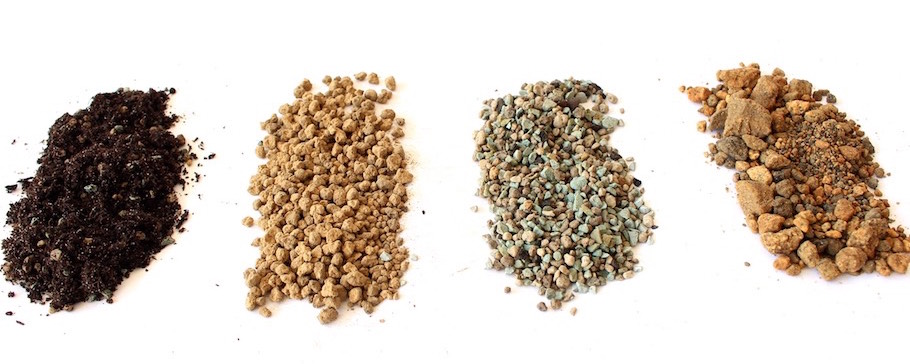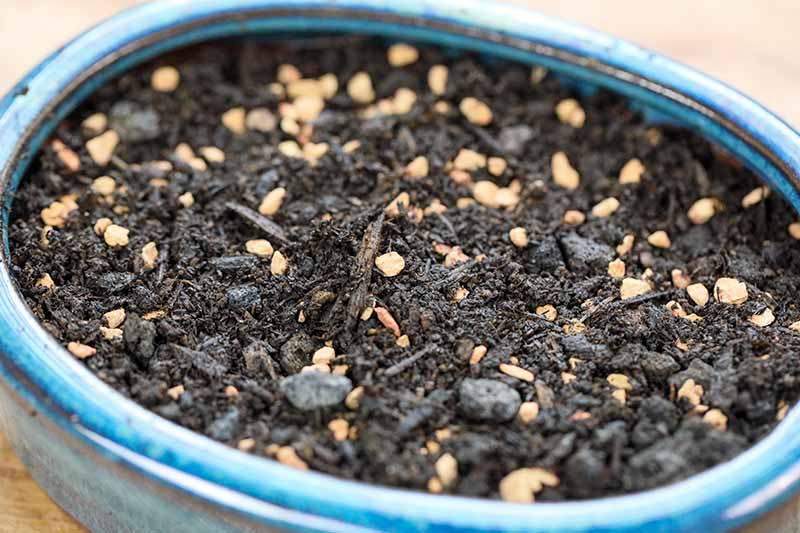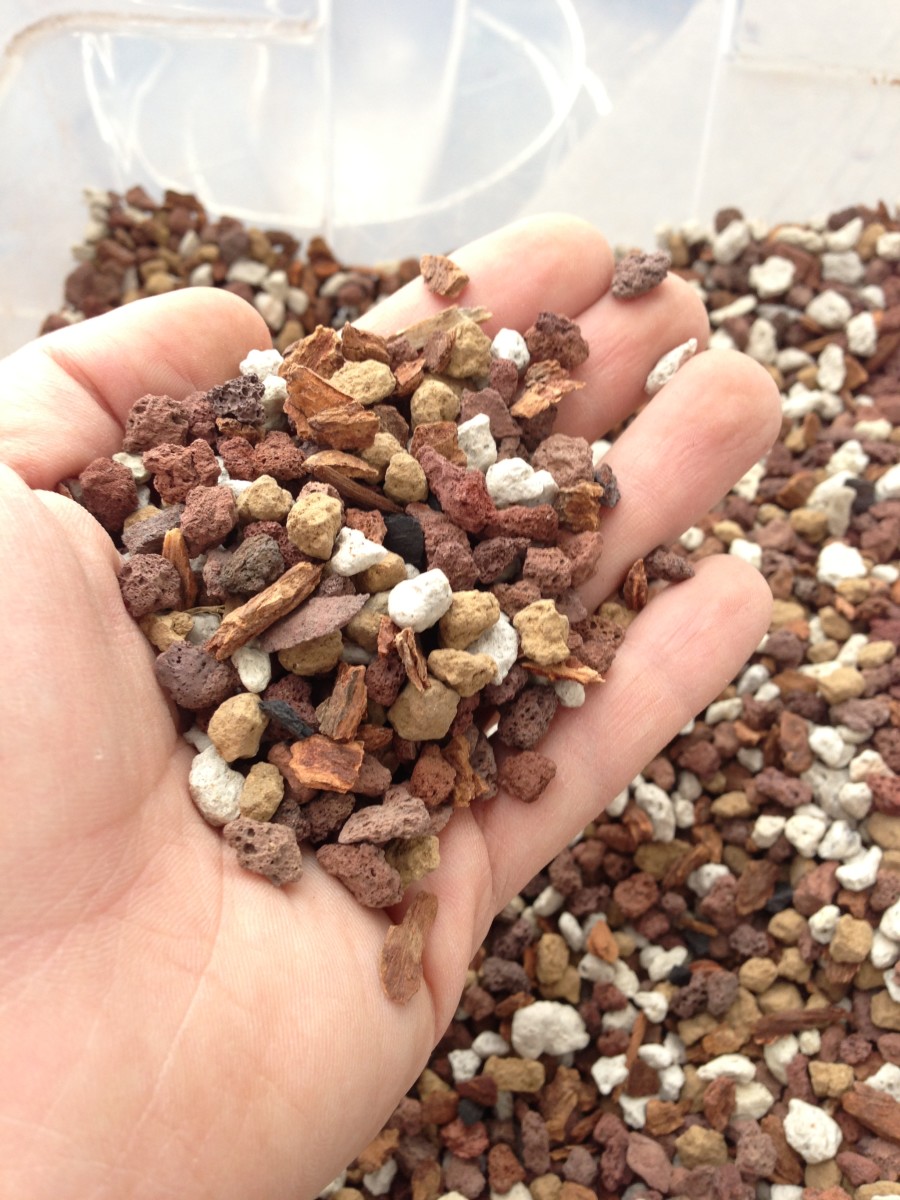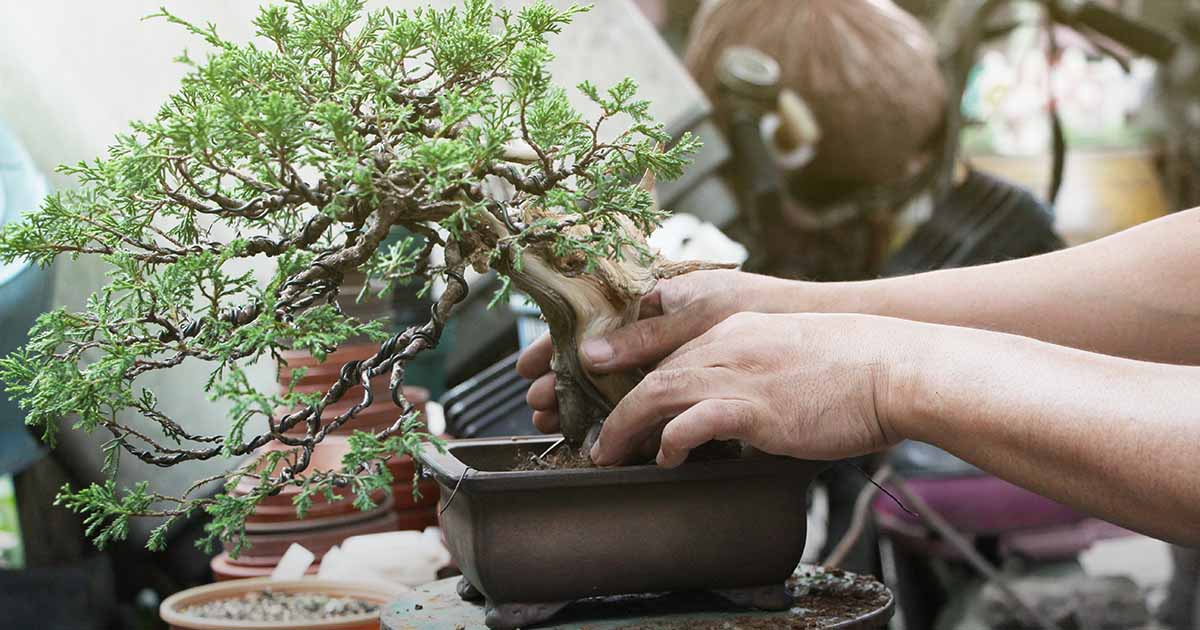Rumored Buzz on lava rock bonsai soil
If you've ever been captivated by the art of bonsai, you may well be questioning if Distinctive soil is needed to cultivate these miniature masterpieces. The answer is Certainly! Particular soil is essential for the health and fitness and vitality of bonsai trees.On this page, we will discover the different types of soil and substrates used in bonsai cultivation, which includes organic and natural and inorganic options.
We'll also discover advised soil mixtures for many bonsai species, for instance deciduous, coniferous, and indoor kinds. From akadama and pumice to moss and river sand, we'll dive into your fascinating planet of bonsai soil and assist you realize why It is an essential Component of cultivating these exquisite trees.

Bonsai soil
What is bonsai soil?
Bonsai soil is a specialized type of soil that is specifically formulated for growing and maintaining bonsai trees. Unlike regular garden soil, bonsai soil is well-draining and provides the necessary nutrients and moisture balance for the tree's root system. The composition of bonsai soil is carefully designed to meet the unique needs of bonsai trees, ensuring their health and longevity.
The importance of bonsai soil
The choice of soil plays a crucial role in the success of your bonsai tree. The right soil provides optimal drainage, allowing excess water to flow freely and preventing root rot. It also promotes a healthy and well-developed root system, which is essential for the overall health and growth of the tree. Bonsai soil retains moisture while allowing air to reach the roots, striking the perfect balance for the tree's needs. Choosing the right bonsai soil is essential for maintaining a healthy and thriving bonsai tree.
Bonsai substrates
What are bonsai substrates?
Bonsai substrates refer to the different materials that can be used to create the ideal soil composition for bonsai trees. These substrates are carefully chosen to meet the specific needs of different species of bonsai trees and to ensure proper water drainage and nutrient availability.
Different types of bonsai substrates
There are various types of bonsai substrates available, each with its own unique characteristics and benefits. Some common bonsai substrates include:
- Organic materials: These include ingredients such as bark, peat moss, and coconut coir. Organic substrates help retain moisture and provide essential nutrients to the bonsai tree.
- Inorganic resources: These contain elements like pumice, lava rock, and akadama. Inorganic substrates give outstanding drainage, guaranteeing that excess drinking water won't accumulate within the roots from the bonsai tree.
- Soil amendments: These are typically substances which might be included to your soil combination to reinforce its Attributes. Samples of soil amendments incorporate perlite, vermiculite, and sand. They Enhance the soil's aeration, water-holding potential, and nutrient availability.
By being familiar with the different sorts of bonsai substrates as well as their properties, you may select the most fitted a person in your bonsai tree's wants.
Organic or Inorganic Soils
Natural soils for bonsai
Natural soils for bonsai are made up of organic resources for example bark, peat moss, coconut coir, and compost. These materials supply a rich supply of nutrients to the bonsai tree and boost balanced root improvement. Natural soils even have excellent water retention Attributes, making certain the tree receives sufficient moisture in between watering classes. Even so, it is important to notice that natural and organic soils might break down eventually and grow to be compacted, resulting in weak drainage and prospective root problems.
Inorganic soils for bonsai
Inorganic soils for bonsai encompass materials like pumice, lava rock, akadama, and soil amendments like perlite or vermiculite. These elements have outstanding drainage properties, preventing waterlogged soil and endorsing aeration across the roots. Inorganic soils are preferred by lots of bonsai fanatics because of their longevity and skill to offer a stable environment for that bonsai tree's root system. Having said that, They might need more Regular watering and additional fertilization, as they don't hold just as much moisture or nutrients as organic and natural soils.
Positives and negatives of working with organic and natural and inorganic soils for bonsai
Deciding on among organic and natural and inorganic soils in your bonsai tree is dependent upon various aspects, including the unique species of tree, your climate, and personal Tastes. Listed below are the pluses and minuses of each and every:
Organic and natural soils:
- Execs: Supply nutrients, great h2o retention, endorse healthful root growth.
- Drawbacks: May break down after a while, probable for bad drainage Otherwise effectively maintained.
Inorganic soils:
- Professionals: Great drainage, extensive-lasting, steady atmosphere for roots.
- Negatives: Much less water retention, could call for additional Repeated watering and fertilization.
By taking into consideration the pros and cons of the two organic and inorganic soils, you can make an knowledgeable determination based on the particular needs of the bonsai tree.
Soil elements
Crucial components of bonsai soil
Bonsai soil is often made up of a few main components: grit, organic issue, and clay. These parts do the job alongside one another to develop the ideal soil composition for the bonsai tree's root system.
- Grit: Grit, including sand or perlite, offers drainage and aeration in the soil. It can help stop waterlogging and lets air to get to the roots.
- Natural and organic make any difference: Organic and natural make a difference, including compost or bark, presents nutrients towards the bonsai tree. In addition, it aids keep humidity and Enhance the soil's Total construction.
- Clay: Clay particles present some water retention features and aid bind the soil with each other. Even so, a lot of clay can lead to lousy drainage and compaction.
Purpose of each soil ingredient
Just about every soil ingredient plays a vital position in making a very well-balanced and healthy natural environment to the bonsai tree's roots.
- Grit: Grit offers the mandatory drainage and aeration from the soil. It stops the roots from sitting down in stagnant drinking water, lowering the potential risk of root rot and promoting overall root health and fitness.
- Organic and natural issue: Organic make any difference delivers important nutrients for the bonsai tree. It aids in humidity retention and contributes to the overall composition with the soil.
- Clay: Clay particles assist bind the soil together and supply some drinking water retention potential. On the other hand, it is vital to equilibrium the quantity of clay to prevent troubles like weak drainage and compaction.
By comprehension the roles of each and every soil ingredient, you may develop a balanced bonsai soil combine that fulfills the particular needs of your tree.

Recommended Bonsai soil mixtures
Common bonsai soil mixtures
There are several common bonsai soil mixtures that have been proven effective for various types of bonsai trees. These mixtures typically consist of a combination of inorganic substrates, organic matter, and soil amendments.
Some of the commonly used bonsai soil mixtures include:
- Akadama, pumice, and lava rock: This mixture is popular among bonsai enthusiasts for its excellent drainage and water retention properties.
- Akadama, lava rock, and organic and natural matter: This mixture combines some great benefits of inorganic substrates With all the nutrient-prosperous properties of natural and organic make any difference.
- Pumice, perlite, and bark: This combination presents excellent drainage and aeration though retaining some dampness and furnishing nutrients.
They're just a couple examples of bonsai soil mixtures, and the ideal mixture will depend on the specific needs of the bonsai tree and also your local climate.
Things to take into account when picking out a bonsai soil combination
When deciding on a bonsai soil combination, it is important to take into consideration the subsequent things:
- Species of bonsai tree: Distinct species have unique humidity and nutrient specifications. Study the specific demands of your respective tree to pick out a soil mixture that fulfills its necessities.
- Climate: The local climate you live in can affect the moisture retention properties from the soil. Take into account the regular humidity and temperature in your neighborhood When picking a soil mixture.
- Watering routines: Your personal watering routines and schedule must align Together with the soil mixture you select. Some mixtures call for far more Regular watering, while others retain dampness for for a longer time periods.
- Finances: Some soil elements could be dearer than Some others. Contemplate your finances when choosing a soil combination.
By using these things into consideration, you can select a bonsai soil mixture that gives the very best escalating situations for your personal tree.
Deciduous Bonsai soil
Best soil composition for deciduous bonsai
Deciduous bonsai trees, such as maple or birch, have specific soil demands to assistance their expansion and health and fitness. The best soil composition for deciduous bonsai commonly features a mixture of organic make a difference, inorganic substrates, and soil amendments.
A encouraged soil composition for deciduous bonsai may perhaps include:
- Akadama: Provides excellent water retention even though allowing for drainage. Furthermore, it releases nutrients slowly but surely eventually.
- Pumice: Encourages aeration and drainage while in the soil, protecting against waterlogging.
- Bark or peat moss: Provides natural and organic matter into the soil, delivering nutrients and humidity retention.
This soil composition ensures that the roots of deciduous bonsai trees receive the correct equilibrium of moisture, nutrients, and oxygen for ideal expansion.

Coniferous and Pine soil
Ideal soil mixture for coniferous and pine bonsai
Coniferous and pine bonsai trees have specific soil requirements due to their water retention needs and preference for acidic soil. An ideal soil mixture for coniferous and pine bonsai should provide good drainage while retaining moisture and maintaining the desired pH level.
A recommended soil mixture for coniferous and pine bonsai may include:
- Akadama: Provides excellent water retention while allowing for sufficient drainage. It releases nutrients slowly over time.
- Pumice: Promotes aeration and drainage from the soil, avoiding waterlogged roots.
- Peat moss: Adds organic make a difference and acidity on the soil, creating an excellent pH level for coniferous and pine trees.
This soil mixture makes certain that the roots of coniferous and pine bonsai trees acquire the ideal balance of humidity, nutrients, and acidity for his or her specific needs.
Akadama
What's akadama?
Akadama is really a type of clay soil that may be greatly Employed in bonsai cultivation. It really is noted for its fantastic h2o retention properties, which assure a gentle supply of dampness to the bonsai tree's roots. Akadama is likewise prized for its ability to launch nutrients slowly and gradually eventually, giving a regular source of nourishment with the tree.
Benefits of making use of akadama in bonsai soil
Making use of akadama in bonsai soil provides several Added benefits:
- H2o retention: Akadama has Excellent drinking water retention Homes, making it possible for it to carry humidity devoid of getting to be waterlogged. This makes sure that the bonsai tree's roots receive a steady source of water, advertising and marketing healthier development.
- Nutrient release: Akadama little by little releases nutrients into the soil eventually, giving a steady supply of nourishment to the bonsai tree. This minimizes the necessity for Repeated fertilization and helps keep a balanced nutrient profile.
- Aeration: Regardless of its drinking water retention capabilities, akadama also delivers ample aeration towards the bonsai tree's roots. It enables air to get to the root program, avoiding troubles which include root rot because of lack of oxygen.
By incorporating akadama in to the bonsai soil, you are able to generate an optimal developing environment on your tree, ensuring its health and vitality.

Lava rock
How lava rock benefits bonsai soil
Lava rock is a popular component in bonsai soil mixtures due to its excellent drainage and aeration properties. It is typically used in conjunction with other substrates to create the ideal soil composition for bonsai trees.
The benefits of lava rock in bonsai soil include:
- Drainage: Lava rock provides excellent drainage, preventing waterlogging and ensuring that excess water flows freely through the soil. This helps prevent root rot and provides a healthy environment for the roots to thrive.
- Aeration: The porous character of lava rock lets air to circulate in the soil, providing oxygen for the bonsai tree's root system. Proper aeration is essential for wholesome root growth and Over-all tree expansion.
- Longevity: Lava rock is often a tough product that doesn't stop working simply. This makes certain that the soil framework continues to be stable after a while, decreasing the necessity for Recurrent soil replacements.
Lava rock is accessible in various sizes and designs, permitting for personalization determined by the particular requires of your bonsai tree and soil needs.
Differing types of lava rock
There are differing kinds of lava rock that can be Utilized in bonsai soil mixtures, including:
- Black lava rock: Black lava rock is often a frequently applied content in bonsai soil mixtures. It offers great drainage properties and adds an aesthetic component to the overall presentation of your bonsai tree.
- Purple lava rock: Pink lava rock is another preferred selection in bonsai soil mixtures. It offers comparable drainage and aeration Added benefits as black lava rock but has a definite reddish colour that provides visual curiosity on the container.
The two black and pink lava rocks are widely accessible and might be easily integrated into your bonsai soil combination.
Potting
Important methods for thriving bonsai potting
Potting is a critical system in bonsai cultivation, as it straight impacts the well being and enhancement on the tree's roots. Below are a few vital methods for prosperous bonsai potting:
- Pick the right pot dimension: Pick out a bonsai pot that enables for root development whilst nonetheless delivering a snug in shape. Stay away from pots which have been also huge, since they can lead to extreme soil humidity and bad root improvement.
- Use bonsai wire: Secure the tree within the pot employing bonsai wire to guarantee security. This stops the tree from shifting or getting uprooted throughout watering or solid winds.
- Trim and spread the roots: Ahead of potting the bonsai tree, meticulously trim and distribute out the roots. This encourages outward advancement and prevents root tangling or root-bound troubles.
- Increase mesh screens: Place mesh screens over the drainage holes at The underside of your pot to forestall soil erosion and assure proper drainage.
- Use new bonsai soil: When potting, constantly use contemporary bonsai soil to offer the necessary nutrients and best escalating ailments for that roots.
By adhering to these important ideas, you can make certain A prosperous potting approach and endorse the overall health and fitness and development of the bonsai tree.
The position of bonsai pots in soil humidity control
Bonsai pots Enjoy a crucial job in soil dampness Command, immediately impacting the health and expansion in the Organic or Inorganic Bonsai Soils tree. Bonsai pots are usually shallow and possess drainage holes, allowing surplus water to flee and protecting against the soil from turning out to be waterlogged.
The design of bonsai pots encourages evaporation and air circulation, which can help regulate soil dampness degrees. The shallow depth and large opening with the pot expose more floor area in the soil to your air, aiding in moisture evaporation. This prevents the roots from sitting in excessively damp soil, minimizing the chance of root rot and various water-connected issues.
Furthermore, the drainage holes in bonsai pots make it possible for any extra drinking water to escape, avoiding waterlogged soil and advertising aeration throughout the roots. Proper aeration is essential for the wellbeing and progress of the root technique, guaranteeing the bonsai tree gets the mandatory oxygen for growth.
By making use of bonsai pots designed for powerful humidity Handle, you may build a good atmosphere on your bonsai tree's roots and promote its Total overall health and vitality.
In summary, deciding on the appropriate bonsai soil is significant to the success and wellbeing of the bonsai tree. Comprehension the different types of bonsai substrates, the job of organic and inorganic soils, The real key parts of bonsai soil, and the various advisable soil mixtures will help you offer the ideal developing ailments for your personal read more bonsai tree. Irrespective of whether you have a deciduous or coniferous bonsai, incorporating materials like akadama and lava rock can enrich the soil's drainage and nutrient availability. In addition, being attentive to potting approaches and applying bonsai pots created for moisture Handle will even further support the thriving development of the bonsai tree. With right comprehension and implementation of bonsai soil practices, you'll be able to take pleasure in the magnificence and artistry of bonsai cultivation For some time to come.
